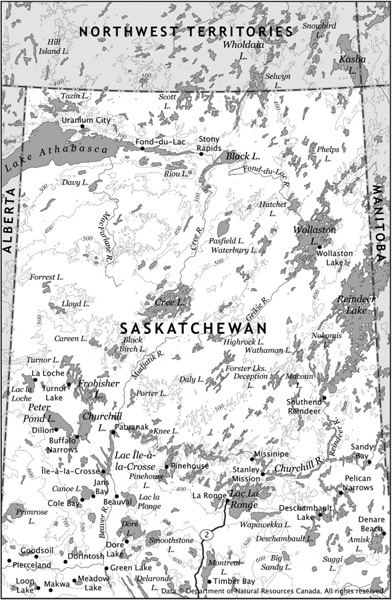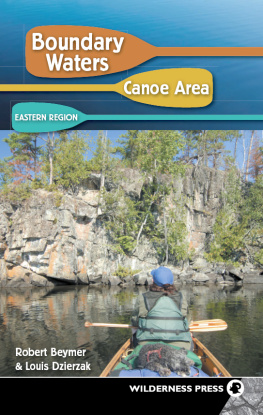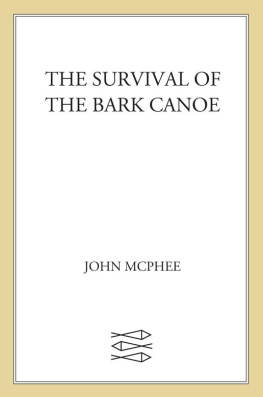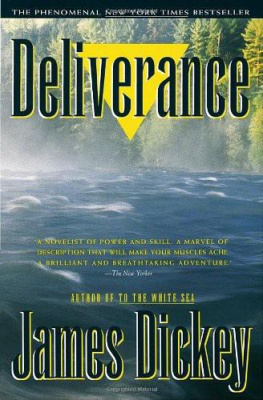CANOE TRIP
North to Athabasca
DAVID CURRAN


CANOE TRIP: NORTH TO ATHABASCA
2009 David Curran
Published by Hellgate Press
All rights reserved. No part of this publication may be reproduced or used in any form or by any means, graphic, electronic or mechanical, including photocopying, recording, taping, or information and retrieval systems without written permission of the publisher.
Hellgate Press
PO Box 3531
Ashland, OR 97520
email:
Editor: Harley B. Patrick
Cover design: L. Redding
Library of Congress Cataloging-in-Publication Data
Curran, David C.
Canoe trip : north to Athabasca / David Curran. -- 1st ed.
p. cm.
ISBN 978-1-55571-667-7
1. Canoes and canoeing--Athabasca, Lake, Region (Sask. and Alta.) 2. Curran,
David C.--Travel--Athabasca, Lake, Region 3. Natural history--Athabasca, Lake,
Region (Sask. and Alta.) 4. Athabasca, Lake (Sask. and Alta.)--History. 5. Athabasca,
Lake, Region (Sask. and Alta.)--Description and travel. I. Title.
GV776.A42C87 2009
797.1220971.232--dc22
[B]
2009042515
Printed and bound in the United States of America
First edition 10 9 8 7 6 5 4 3 2 1
Other Books by David Curran
Travel Adventure
Canoe Trip: Alone in the Maine Wilderness
Stackpole Books. 2002
Psychology
Tyranny of the Spirit
Jason Aronson. 1996
Adolescent Suicidal Behavior
Taylor & Francis (originally Harper & Row. 1987

Lake Athabasca, the MacFarlane River and the wilderness region of northern Saskatchewan
Chapter I
The small plane rocked gently, a little to the right, then a little to the left. And when it did the land below rose up and replaced the sky, spreading out to fill the scene. Each time the wing dipped, the pale green land and deep blue water filled each TV screen-like window along my side of the plane. Like the sky, it was vast and empty of the work of man. For as far as I could see in either direction the stony ground, the faint forests, the streams, the rivers, the ponds and the lakes stretched out to the horizon. Some lakes so large you could not see their end outside either window, and sprinkled with far more islands than could be counted in the time it took to fly over them.
Northern Maine, where I have canoed and over which I have flown, is called wilderness. You look down and see nothing but uninhabited forests for a hundred miles or more. But men have been there. The logging roads and remnants of logging roads, old and new, mark their presence. There is the occasional bridge across a stream, a Ranger cabin. It is unsettled, but it is not unused or untraveled. There was none of that here. Since leaving Saskatoon, now a couple hundred miles to the south, we had passed over the few towns that ring the city, the squared patchwork of prairie farmland, finally reaching the woods. For the next hour it had been just the woods and the water. No more pastures, no more homes or roads. No more man-made places or patterns on the ground. Two hundred miles north of Saskatoon we came down for fuel (as I said, it was a small plane) at La Ronge: a patch of asphalt and a single gymnasium-size building. There were no other planes. We trooped out onto the pavement and into the clear cool June morning to Cokes and bottled water and the cautious conversation of men who dont know each other. My partner, Walter, and I were the only canoeists. The rest, about twenty men and a few kids, were fishermen and bow hunters in groups of twos or threes or fours en route to the sporting lodges of the Far North. Outside, our solitary plane was being refueled and the empty forest spread out low and flat around the quietest airport in the world.
Back in the waiting room at Hangar Nine at Saskatoon Airport wed talked a bit with a few of the fisherman. Walter can speak their language and like tradesmen they discussed in jargonese the art and mystery of fishing in words and phrases largely incomprehensible to a non-angler like me. He had been Commissioner of Fisheries and Wildlife in Massachusetts for several years during the 1980s. He has fished and hunted just about everything worth taking all over North America and knows what hes talking about. He could deal with these people. I have never hunted and am tempermentally unfit for fishing. I went once as a child. My father took four of us boys. I spent the time running around with my brother Tommy while my brothers Chris and John tried earnestly to fish. I got a hook in my ear. A trout brook runs next to my house in Massachusetts. There is a deep cool pool where I always see them congregate in a silent woven pattern of movement like synchronized swimmers without the makeup and smiles. And they stay underwater, which I wish the synchronized swimmers would do. They arent large. The biggest look to be about six or seven inches long. One day I decided to see if I could catch one. So I cut a pole, bought a few small fish hooks and line, dug some worms and walked down to sit by the pool. The fish swam away and hid behind a boulder in the stream. In ten minutes I went home. That is my fishing resume.

We began the day very early. Our instructions were unequivocal, printed and distributed to us by Blackmurs Athabasca Fishing Lodges who were managing our long journey north and, for Walter and I, our canoe rental and flights to and from our river destination. We were told that the van, which would carry us to Hangar Nine and TransWest Air, would arrive at the hotel at 5:15 a m. It would depart the hotel at 5:20 a.m. The five hundred mile flight up to Stony Rapids at the far eastern tip of Lake Athabasca would leave Saskatoon at 6:00 a.m.
We lined up for coffee at the self-serve pot. A couple of men had teenage sons and daughters with them, sleepy, slouchy and slack-faced thirteen and fourteen year-olds who smiled weakly at their fathers goofy attempts at stimulating some excitement in them for what lay ahead. The mood was light. Friends kidded each other in the disparaging manner of male humor, recalling past hunting and fishing failures and gaffes, all carefully exaggerated for the proper effect. There was some interest in us and in what we were planning to do. None of them had ever done anything of the sort. We were also the only ones from the East. All of these folks were from the American West, Midwest or South. There were no Canadians.
But here in La Ronge we all seemed more uncertain and ill-at-ease in this strange silent place, feeling the emptiness and the cold and the three hundred more miles north we soon would fly in that scuffed and faded little plane over there. The fuel truck pulled away. The pilot reappeared and we climbed back aboard for the second half of the flight. I was sitting alone next to the window. Walter was one row up and over on the other side. I was glad to be apart. We had been traveling together since 5:00 a.m. the day before and would spend many more days together before we were through. I wanted to be alone with my thoughts for a while and write a bit in my journal. But all I could do was lean my forehead against the window and stare at what was below.
This land was more than simply uninhabited, untraveled and unused. It looked new, freshly formed. The forest, even the individual trees, appeared sparse and thin and looked as if still in the process of filling in. It had the look of land just emerging from a deep hard winter right after the snow has melted and the ground seems flattened and barely awake, the green still slumbering underground, the debris of winter still pressed hard into the land, a prevailing grayness where only the hardiest trees and shrubs produce their green. The last of the five great ice sheets, each a mile thick, receded from Saskatchewan 10,000 years ago. For two million years each in turn had crushed its way across the ground, then scraped it raw as it drew back, leaving the land to struggle to renew itself, only to be frozen and buried again. This land below looked as if it was just beginning, still struggling, still new.








